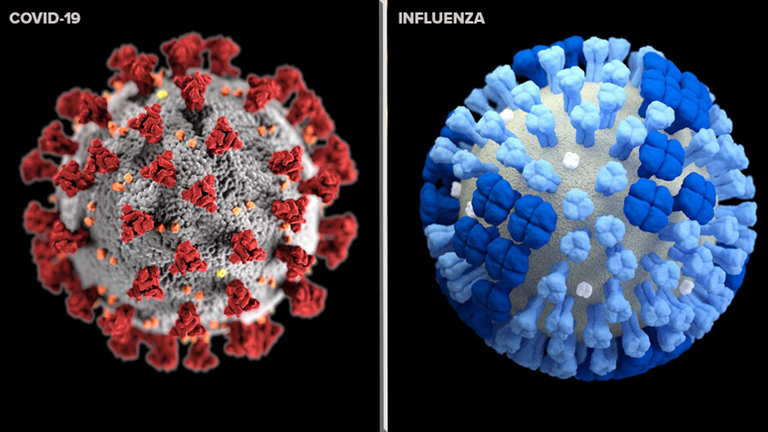
Covid-19 vs Flu
I think it is valuable to show coronavirus's severity in terms of seasonal Flu just to show how much we have endured this past year.
In some respects the topline figures can even understate the severity. The age distribution of the burden of coronavirus is enormous.
For 50-64 year olds, last year's Flu caused about 5,100 deaths and 88,000 hospitalizations. Coronavirus caused so far at least 71,000 deaths and at least 1,380,000 hospitalizations. Or 14x as many deaths and 16x as many hospitalizations.
For 18-49 year olds, last year's Flu caused about 2,700 deaths and 85,000 hospitalizations. Coronavirus caused so far at least 21,000 deaths and at least 550,000 hospitalizations. Or 8x as many deaths and 6x as many hospitalizations.
How many life years lost?
Another way to view the coronavirus pandemic is in life years lost. It can be a useful tool to see what the burden of premature death was for a given cause. In absolute terms, it isn't necessarily intuitive, but it can be a good relative metric. It is the number of years that a given person had remaining based on their age-based life expectancy. So a person who is 80 that dies will have generally lost 8 life years in the US. A person in the US who is 18 that dies will have generally lost 61 life years.
For seasonal influenza, we lose generally about 600,000 life years in a moderate season.
So far extrapolating to the present, the Coronavirus has cost at least 7 million life years in the US (using confirmed deaths).
To put it further in perspective (these numbers are relative to the population and age structure of the year 2000 for relational purposes):
The 1968 Flu pandemic cost about 1.69 million life years.
The 1957 Flu pandemic cost about 2.70 million life years.
And the 1918 Spanish Flu pandemic cost an enormous 63.72 million life years (the average age of death was 27 and it caused an estimated 675,000 deaths in the US).
Prevention, Mitigation and Intervention
One last way to think of this pandemic that is a bit more hopeful is to consider how many avoidable infections, hospitalizations, and deaths we prevented through mitigation, treatment, and intervention.
A general estimate of the IFR of the virus is about 0.72% for the US population from the CDC. The herd immunity threshold for this virus isn't known, but general estimates are around 70%. The attack rate of this virus due to overshoot can and has reached into the 80% and 90% range in uncontrolled spread environments before population immunity slows the spread to an endemic level.
We've reached over 510,000 confirmed coronavirus deaths and over 580,000 excess deaths during this pandemic.
If we did absolutely nothing and pretended like this virus didn't exist, it would cause about 280 million infections, 20 million hospitalizations, about 2 million deaths before becoming endemic assuming an attack rate of 85%. Of course, there would be tremendous excess death from overburdened and at-capacity hospitals particularly if this occurred in a short amount of time. In Manaus, Brazil, the closest parallel to a large, open uncontrolled coronavirus epidemic lasted about 4 months before slowing.
We aren't finished with this pandemic by any means, but it looks like we will reach around 600,000 confirmed coronavirus deaths and around 670,000 excess deaths before herd immunity through vaccination stops this pandemic this Summer. We will likely reach over 6 million hospitalizations. And a total amount of infections of 150 million or more.
That's a tremendous amount of morbidity and death avoidance thanks to mitigation and vaccines. It would mean avoiding 130 million infections, 14 million hospitalizations, and over 1.3 million deaths.